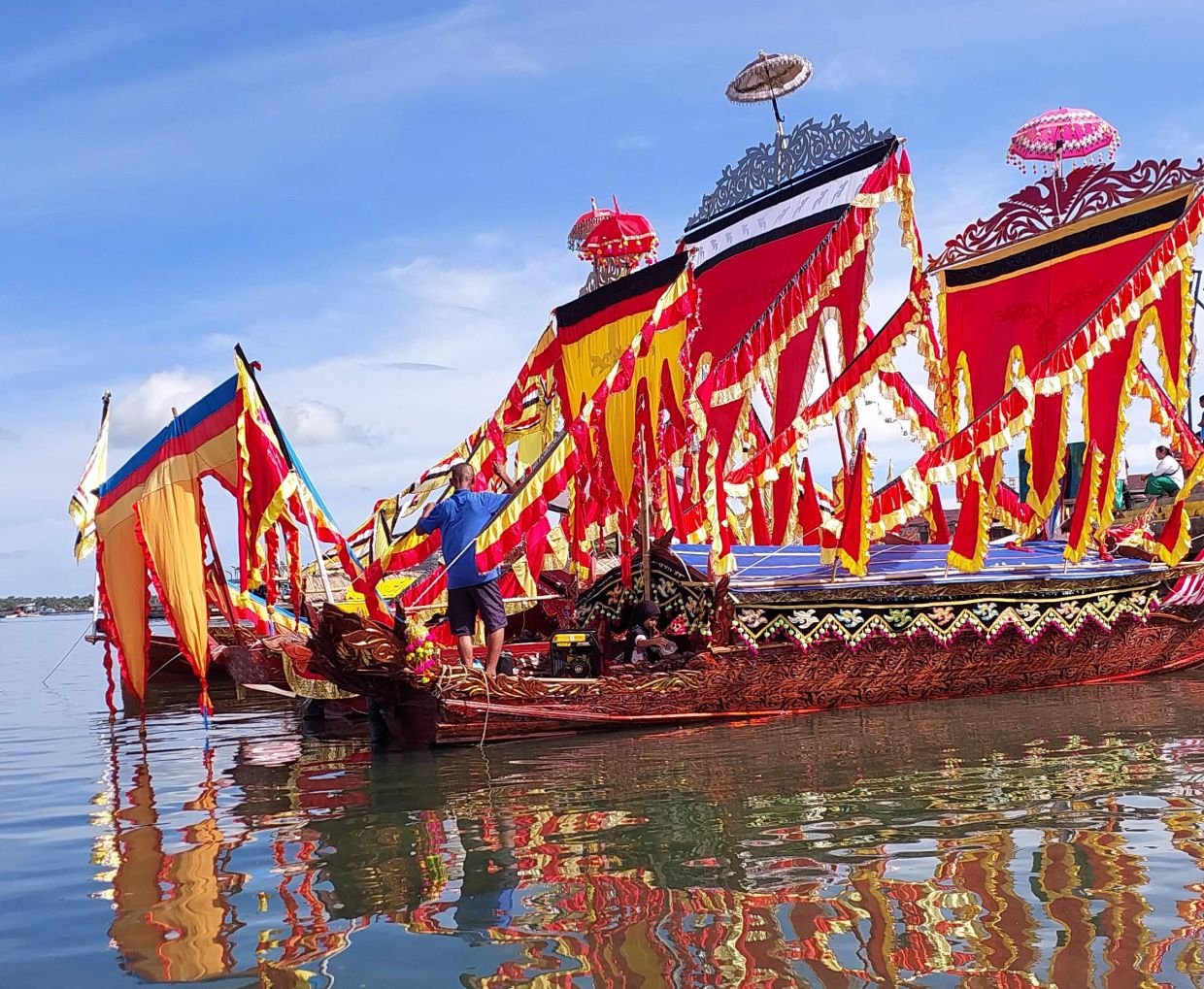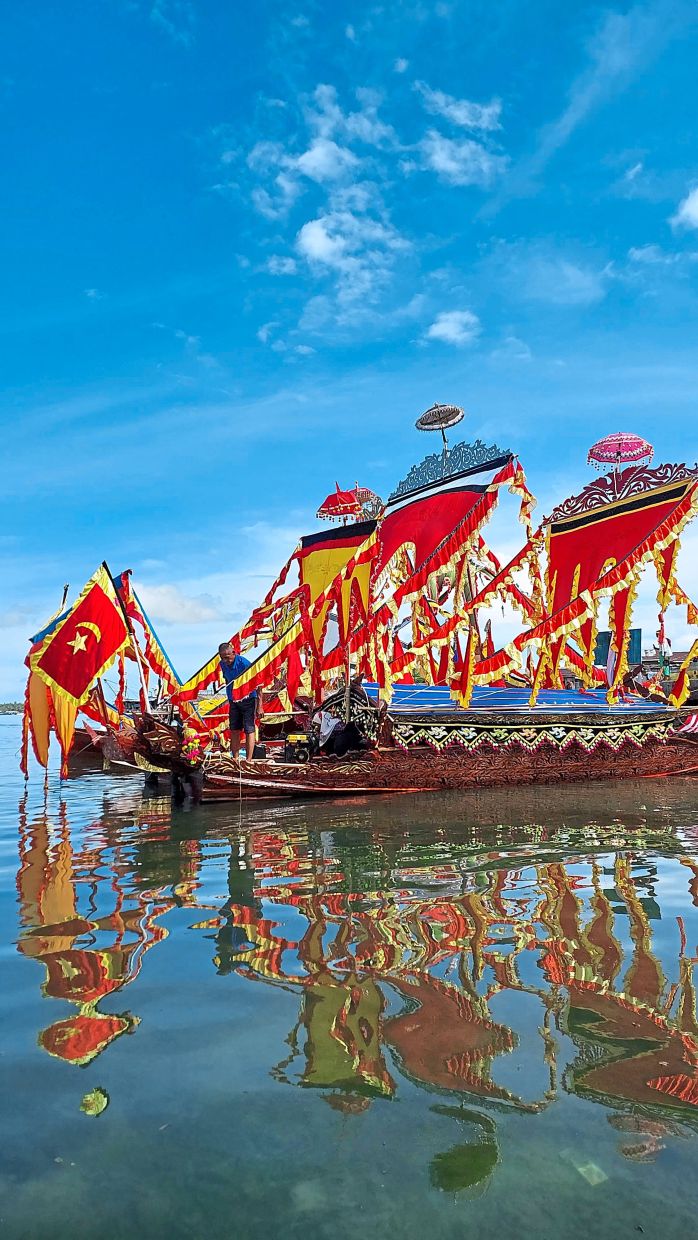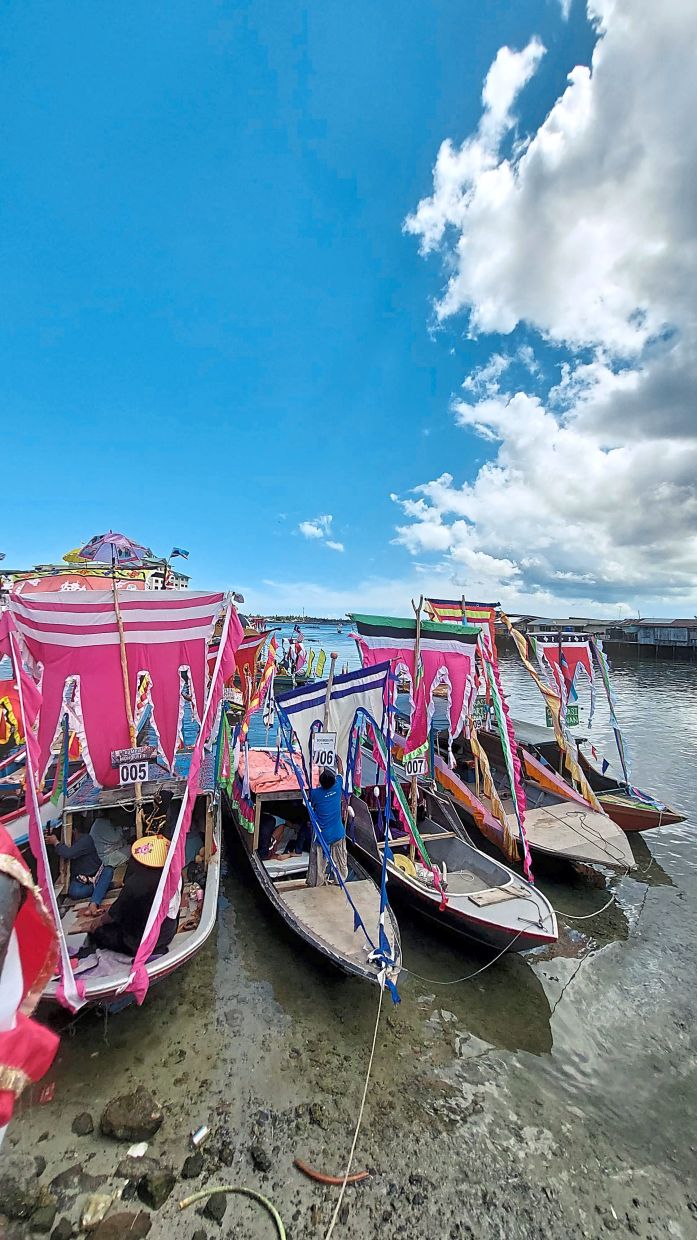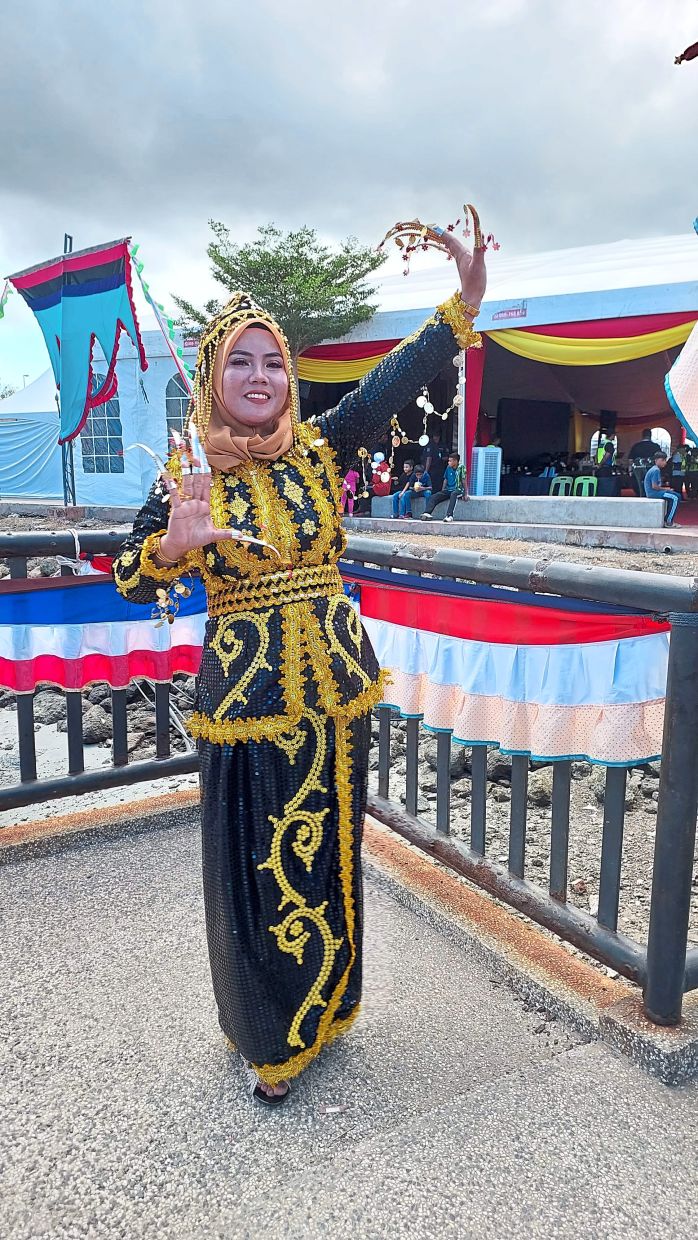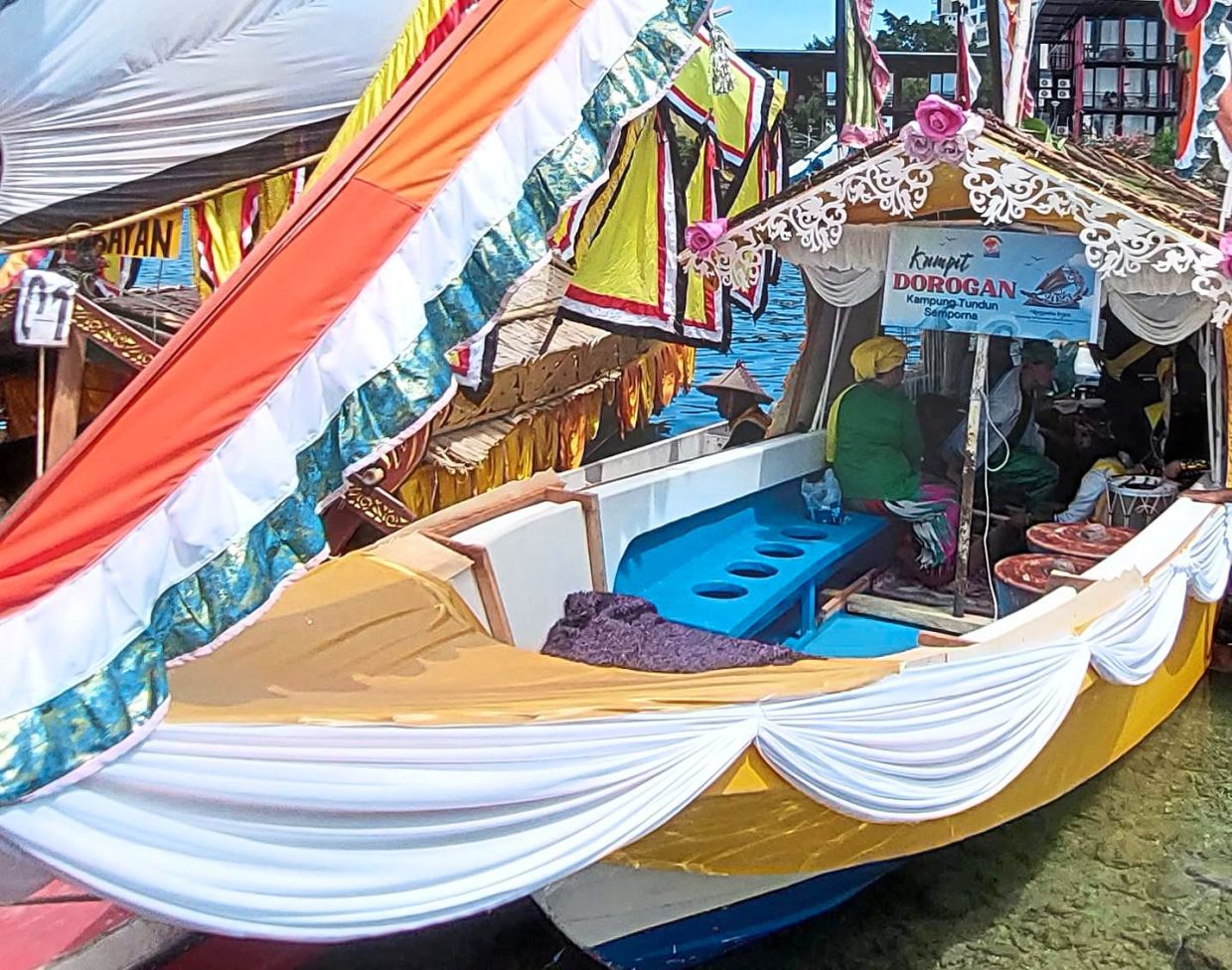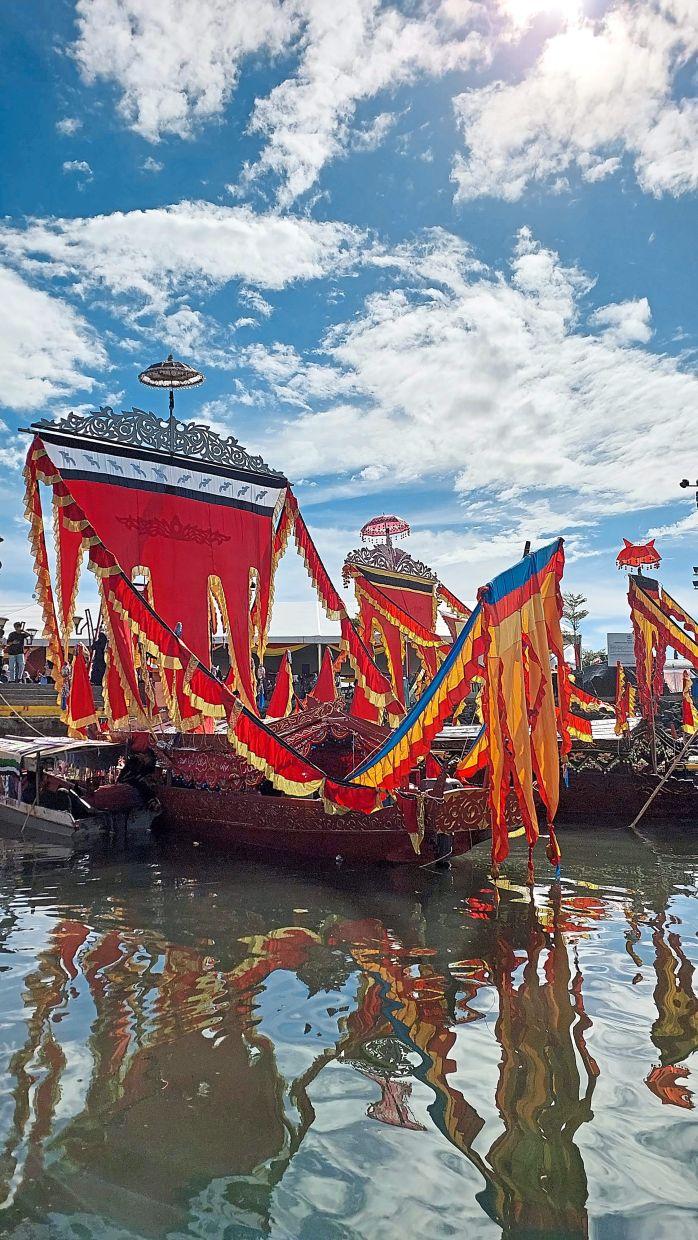Photos: MELODY L. GOH/The Star
A chance meeting with this year’s “Ratu Lepa” or queen of the Regatta Lepa at a water resort in Semporna, Sabah, allowed us to learn a little bit more about the Bajau Laut people and their culture.
The Bajau Laut of Semporna are mostly seafarers, and are said to be gifted swimmers and divers. Traditionally, they were also a nomadic people, choosing to live either in their lepa (traditional boat) or in temporarily-built stilt houses, until the monsoon season arrives.
When the storms hit, most would then move to the islands and live in huts they’ve built from whatever wood scraps, sturdy branches and leaves they could find. Once the skies are blue again, they go back to living on their houseboats.
In modern times, however, the families don’t move around as much any more as they prefer to settle down at the surrounding water villages, islands or on the Semporna mainland itself. This is due in part to climate change – where it is getting harder to predict the weather – as well as socio-economic factors.
But that’s not all that we learned from the Ratu Lepa 2023, Nur Afikah Arman, a 26-year-old Bajau-Idahan (Idahan is a minority ethnic group mainly based in Lahad Datu) from Kampung Bugaya, near Semporna town. She was at the resort for a photo session, and in between breaks, we managed to have a chat with her.
She told us about the traditional Bajau Laut dance called the Igal-Igal and its many iterations, including Igal Tabawan, Igal Limbayan and Igal Panangsang. One would have to learn the basic steps of the Igal-Igal from a young age. Usually, a parent, grandparent, older sibling or relative would teach the children the dances, but some kids are able to learn on their own just by watching them being performed during celebrations or ceremonies.
The word “igal” is said to mean “eagle” and the dance movements are a mimicry of an eagle’s wings in flight. Nur Afikah said the dance movements are also meant to mimic the waves of the sea and the wind, both of which are significant elements in the Bajau Laut community and culture.
Igal-Igal can be performed solo, as a duet or in groups, accompanied by lively music performed using the kulintangan, gong and tambur (drum).
Nur Afikah is currently studying for her Masters degree in Science Tourism at Universiti Teknologi Mara in Shah Alam, Selangor. She was crowned the queen of the regatta in a pageant known as Budjang Manis, which is similar to the more popular Unduk Ngadau pageant held annually during Kaamatan or Harvest Festival at the end of May.
The Budjang Manis is part of the festivities of the Regatta Lepa, known to locals as simply, “Lepa Lepa”. The regatta has been held in Semporna since 1994, and was the brainchild of the late Tun Sakaran Dandai, who was then the Sabah Yang di-Pertua Negeri. Sakaran was also a native of Semporna, and had wanted to promote the district, its people and cultural heritage to all Malaysians.
Today, the Regatta Lepa is the biggest annual event for not just the district but the whole east coast of Sabah, and one of the biggest in the state, too. It is also said to be the longest-running festival in Sabah; this year marked its 28th anniversary.
(In 2020, the festival was postponed due to the pandemic, while in 2021, only a “virtual” celebration was held. The regatta only returned in full force last year, though locals have said that the celebration was not as “meriah” or festive as before.)
Originally, the Regatta Lepa was held every year in April, but for the past few years it has been held between October and December. This year’s regatta took place from Nov 17 to 19, which is typically when the monsoon season starts there.
Luckily, the weather was pretty lovely during the recent three-day celebration, with only a smattering of rain in the evenings, and strong currents in the early mornings.
But then again, monsoon season in Sabah’s east coast is considered “mild” as compared to the ones in the east coast of Peninsular Malaysia.
The lepa factor
There are three main highlights of the Regatta Lepa: The first is the parade of beautifully-decorated lepa-lepa, followed by the crowning of the Ratu Lepa and her performance of Igal-Igal, and lastly, the flying of the “sambulayang”, a colourful sail that traditionally symbolises the identity of the Bajau Laut. (The Bajau people in general are known for their love of bright colours, particularly red, yellow, gold, blue and green.)
During the floating parade, each lepa or boat – these days, modern boats are also accepted, as long as they have the basic designs of a lepa and are decorated in the traditional style – is meant to represent a different family and/or village from Semporna, as well as from neighbouring towns like Tawau.
In recent years, representatives from the Philippines and Indonesia have also taken part in the festivities.
The most beautifully-decorated boat wins a prize.
Other water activities include a lepa tug-of-war, kelleh-kelleh or small dugout boat race, and even a duck-catching competition!
We managed to see at least three large traditional lepa-lepa during this year’s regatta, with intricate carvings adorning the bowsprit, stern and hull of the boats. A few youngsters dressed in traditional costumes entertained guests and onlookers with the Igal-Igal dance, which they performed at the bow. The older folks sat in the middle of the boat, playing the traditional musical instruments.
There were more than 180 boats in the parade and competition, each one with a covered roof in the middle, and a T-framed mast that’s plastered with the brightly-coloured sambulayang, tipas-tipas (triangular pennants) and panji-panji (smaller, rectangular flags). Every mast is also topped with a small, decorative umbrella.
To the untrained eye, the sambulayang may just seem like festive trimmings for the lepa, but if you look at them while they’re fluttering in the wind, their movements actually look like the waves of the ocean. It’s quite mesmerising!
The sambulayang is also used during special occasions like weddings, Malaysia Day, and to welcome the arrival of a guest of honour to the district.
Bigger exposure
Semporna District “Orang Kaya-Kaya” chief, Abdul Majid Palah, was quoted in an article by Bernama as saying that he hopes the Bajau Laut culture will be preserved for future generations.
“Our culture is being introduced to the whole world as it is (included) in Sabah’s tourism calendar. In fact, I hope its uniqueness can attract more local and foreign visitors to this district...” he said in the article.
Meanwhile, Sabah Chief Minister Datuk Seri Hajiji Noor, in a press statement on this year’s Regatta Lepa, said that the state government is committed to ensuring Sabah’s cultural treasures are sustained and preserved.
“These treasures have been passed down for generations, so we want to ensure they do not die out. They are also a catalyst for tourism based on art, culture, and heritage.
“Therefore the Regatta Lepa is one of the programmes that can promote Sabah as a world-class tourism and cultural destination,” he said in the statement.
There were several new segments introduced in the regatta this year. Alongside the Budjang Manis pageant, which is for women, there was one for men called Lallah Dorogan. In this pageant, the competitors also have to showcase their traditional dance skills as well as knowledge of the culture, place and people.
This year, Samsuddin Ismail was crowned the winner of the Lalla Dorogan contest.
A Ratu Lepa Cilik and Lalla Dorogan Cilik were also held for young children, while a concert featuring artistes like Lan Solo, Dayang Nurazreen and Den Bisa took place on the final night of fetivities.
Lepa facts
1. Traditionally, the lepa is used for many purposes, but perhaps more prominently as a houseboat for the nomadic Bajau Laut folks. It’s also a fishing vessel (of course), and a mode of transportation. Bigger lepa-lepa may even be used as a venue for special celebrations like weddings.
2. A traditional, single-masted lepa is made from ubar suluk wood, or red seraya wood, which are found on the islands. It is said that traditionally, no other wood can be used to make this boat, although there are modern ones that use other materials.
3. The basic design of the lepa is meant to look like the figure of a fish. This is not just for aesthetic reasons but also practicality, as this design helps the boat roll with the waves smoothly, preventing it from capsizing or keeling over. Legend has it that no lepa has ever capsized ... although documented reports of this are not found.






